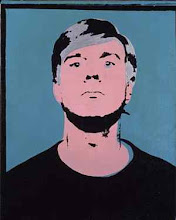 |
| John Hoyland, Advance Town 29.3.80, 1989 |
John Hoyland: Power Stations: Paintings 1964-1982 is at Newport Street Gallery until 3 April 2016.
When it was announced that Damien Hirst was developing a
gallery to exhibit his collection, who would have guessed that it would open
with a show dedicated to John Hoyland? Not me, for one – but so it has, and
what a delight it is. The gallery is fabulous and the show is a
knockout.
Hoyland (1934-2011) was a major figure in British abstract painting and
this exhibition includes work made at the height of his powers. Hoyland and his
peers were, perhaps, never fashionable: British abstract painting was at its
most vital when American Abstract Expressionism had been displaced as the last
word in avant-gardism by Pop, Minimalism and Conceptual Art; as a result the
work effectively went underground and Hoyland and others have not generally won the
attention and respect they deserved.
This exhibition is thus both a pleasure in itself and a
valuable opportunity to rediscover a great painter.
My favourites here are the early large-scale pieces
dominated by reds, oranges and greys and the later works keyed to blue; personally
I find some of those featuring a rather sharp and acid green a little ‘difficult’
and the gold and pink ‘experiments’ of the early 1970s lacking in both the
cool, solid structure and the intense colour of the best work.
The gallery, designed by Caruso St John, has been developed
out of former warehouses and presents a beautiful sequence of large exhibition spaces
over two floors connected by beautifully finished and detailed spiral
staircases. Hirst is on record saying how impressed he was when, as a student, he
visited Charles Saatchi’s original gallery at Boundary Road, in St John’s Wood
(1985-2003); I, too, recall that gallery as a revelation: in the 1980s there was nothing
like it in the UK either for the scale on which it displayed the likes of Judd,
Kiefer, Serra, Twombly, Warhol and others, nor simply for the literally
dazzling huge white spaces it presented. Whether it is inspired or not by Boundary Road Hirst’s Newport Street Gallery is a wonderful
addition to London’s art scene.
 |
| John Hoyland |
 |
| Installation view |
 |
| Caruso St John (architect) Newport Street Gallery, 2015 |
 |
| Caruso St John (architect) Newport Street Gallery, 2015 - detail of staircase |























































